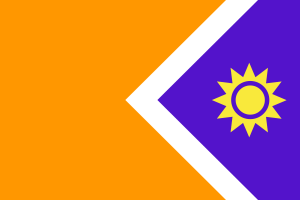Language/Marathi/Culture/History-and-literature
Introduction[edit | edit source]
Welcome to the lesson on the history and literature of Maharashtra! In this lesson, we will explore the rich cultural heritage of Maharashtra and learn about the famous authors and historical figures that have shaped Marathi literature. Understanding the history and literature of a language is essential for gaining a deeper appreciation of the language itself. So, let's dive into the fascinating world of Marathi culture and explore its historical and literary treasures!
History of Maharashtra[edit | edit source]
Maharashtra has a rich and diverse history that spans over thousands of years. The region has been home to various dynasties and empires, each leaving their mark on the cultural landscape of Maharashtra. From the Mauryas and Satavahanas to the Rashtrakutas and Yadavas, Maharashtra has witnessed the rise and fall of mighty kingdoms.
One of the most significant periods in Maharashtra's history is the reign of the Marathas. Led by great warriors like Chhatrapati Shivaji Maharaj, the Marathas established a powerful empire that challenged the might of the Mughals. The Maratha Empire played a crucial role in shaping the political and cultural identity of Maharashtra.
During the British colonial era, Maharashtra became a center for social and political reform movements. Prominent figures like Mahatma Jyotiba Phule and Dr. Babasaheb Ambedkar fought tirelessly for social equality and justice. Their contributions to the upliftment of marginalized communities have had a lasting impact on Maharashtra's society.
Marathi Literature[edit | edit source]
Marathi literature has a rich tradition that dates back centuries. It encompasses various literary genres, including poetry, drama, novels, and essays. Marathi authors have produced significant literary works that have won acclaim both nationally and internationally.
One of the most celebrated figures in Marathi literature is Saint Tukaram. He was a 17th-century poet-saint whose verses, known as Abhangs, continue to inspire millions of people. His devotional poetry reflects deep spirituality and a profound connection with the divine.
Another notable figure in Marathi literature is the poet-saint, Sant Dnyaneshwar. He is renowned for his work, "Dnyaneshwari," which is a commentary on the Bhagavad Gita. Sant Dnyaneshwar's writings are revered for their philosophical depth and spiritual wisdom.
The modern era of Marathi literature saw the emergence of renowned authors like Vishnu Sakharam Khandekar, Pu La Deshpande, and Vinda Karandikar. Their writings explore a wide range of themes and offer unique perspectives on life, society, and human emotions.
Regional Variations in Marathi Literature[edit | edit source]
Marathi literature exhibits regional variations, with different areas of Maharashtra having their own distinct literary traditions. These regional variations are influenced by factors such as geography, history, and cultural practices.
The Varhadi dialect, spoken in the Vidarbha region of Maharashtra, has its own unique literary tradition. It is known for its folk songs, ballads, and storytelling traditions. The works of famous poets like Kavi Bhushan and Gajanan Tryambak Madgulkar are representative of the Varhadi literary tradition.
The coastal regions of Maharashtra, known as Konkan, have their own distinct literary heritage. Konkani literature is characterized by its lyrical poetry, which often explores themes of love, nature, and spirituality. Notable Konkani poets include Keshavsut and Narayan Surve.
Cultural Significance of Marathi Literature[edit | edit source]
Marathi literature plays a vital role in preserving and promoting the cultural heritage of Maharashtra. It reflects the language, history, and traditions of the region, giving voice to the aspirations and experiences of the people.
Literary festivals, such as the Akhil Bharatiya Marathi Sahitya Sammelan, provide a platform for authors, scholars, and literature enthusiasts to come together and celebrate Marathi literature. These festivals showcase the diversity and richness of Marathi literature and serve as a catalyst for the growth of the literary community.
Marathi literature has also been instrumental in promoting social reform movements in Maharashtra. Writers like Lokmanya Tilak and Mahatma Jyotiba Phule used their literary prowess to advocate for social equality and justice. Their writings inspired a generation of reformers and played a crucial role in shaping Maharashtra's social fabric.
Exercises[edit | edit source]
Now that we have explored the history and literature of Maharashtra, it's time to test your knowledge! Complete the following exercises to reinforce your understanding:
1. Match the following Marathi authors with their famous works:
* Vishnu Sakharam Khandekar * Pu La Deshpande * Saint Tukaram a. Vyakti Ani Valli b. Gatha c. Amrutvel
Solution: * Vishnu Sakharam Khandekar - c. Amrutvel * Pu La Deshpande - a. Vyakti Ani Valli * Saint Tukaram - b. Gatha
2. True or False: Sant Dnyaneshwar's "Dnyaneshwari" is a commentary on the Bhagavad Gita.
Solution: True
3. Describe the regional variations in Marathi literature, citing two examples.
Solution: Marathi literature exhibits regional variations, with different areas of Maharashtra having their own distinct literary traditions. For example, the Varhadi dialect, spoken in the Vidarbha region of Maharashtra, has its own unique literary tradition. It is known for its folk songs, ballads, and storytelling traditions. The works of famous poets like Kavi Bhushan and Gajanan Tryambak Madgulkar are representative of the Varhadi literary tradition. Another example is the Konkani literature of the coastal regions of Maharashtra, known as Konkan. Konkani literature is characterized by its lyrical poetry, which often explores themes of love, nature, and spirituality. Notable Konkani poets include Keshavsut and Narayan Surve.
Conclusion[edit | edit source]
In this lesson, we explored the history and literature of Maharashtra, delving into the rich cultural heritage of the region. We learned about the significant historical figures and famous authors who have shaped Marathi literature. Marathi literature not only reflects the language and traditions of Maharashtra but also plays a crucial role in promoting social reform movements and preserving the cultural heritage of the region. By understanding the history and literature of Maharashtra, we gain a deeper appreciation for the Marathi language and its cultural significance.
Continue your journey in the "Complete 0 to A1 Marathi Course" and explore more aspects of Marathi language, culture, and literature.
Sources[edit | edit source]
Other Lessons[edit | edit source]

